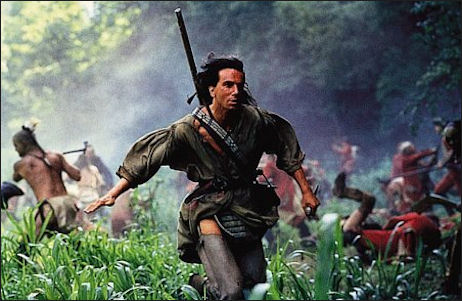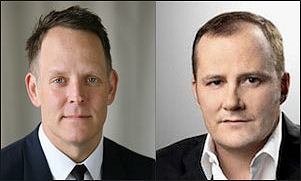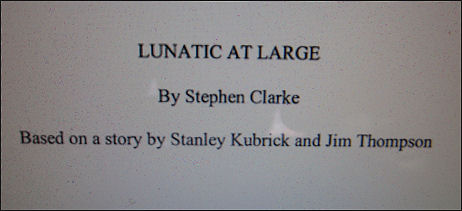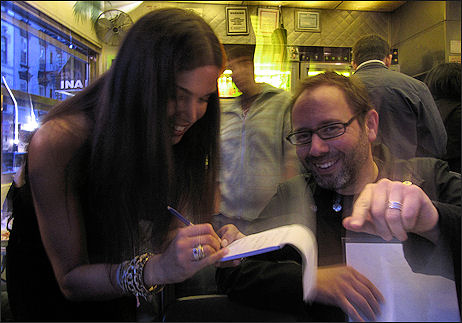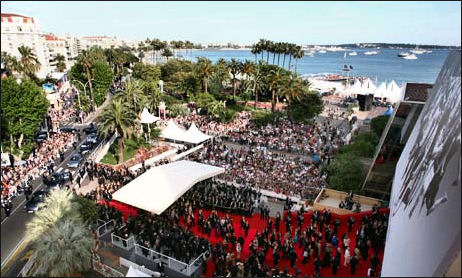In acknowledgment of Ridley Scott‘s forthcoming Robin Hood (Universal, 5.14), The Guardian‘s Stephen Moss has written a big, fat, long-winded piece about the historical origins of the legendary forest bandit.
Except there’s nothing all that clear-cut about any of it. Okay, one thing emerges, which is that the men whose history may or may not have evolved into the legend of Robin Hood were in no way political or noble or pure-of-heart even — they were just hand-to-mouth thieves in a rather rascally sense.
Here are the boiled-down basics:
(1) The Robin Hood legend is just that — a one-size-fits-all bag of mythical bullshit that each culture re-imagines and re-invents to suit its own agenda. In speaking to Stephen Knight, professor of English literature at Cardiff University and one of the world’s leading authorities on the literary evolution of Robin Hood, Moss is told that “the empirical, real Robin Hood — like the ‘real’ King Arthur — is a 20th-century take on reality. Who cares if there was a real Robin Hood? There’s a real myth which is living and breathing.”
(2) And yet there are kernels of apparent historical truth that nearly amount — in Moss’s mind, at least — to a kind of holy grail. “David Crook, the former assistant keeper at the Public Record Office, says he “can make the strongest case anybody can, given how limited the evidence is, for a person called Robert Hod (‘an outlaw and evildoer of our land’) in 1225, who I think may be the same person as a bloke called Robert of Wetherby, who was chased by a posse of sheriff’s men – specially hired men, which was very unusual — in 1225 and captured. There is a payment for a chain, to hang his body in chains, in the Yorkshire accounts for that year. We even know how much was spent on the expedition to catch him.”
“Crook’s theory is that the tale of the pursuit of Robert Hod/Robert of Wetherby rapidly spread, carried up and down the Great North Road, and within a generation Robe Hod and Robhod had become jokey generic names for outlaw. Crook says he has even found a legal document from 1261, in which a clerk has scribbled out the offender’s real name and entered the joke name.
“I find Crook’s hypothesis seductive,” Moss writes. “Robert Hod/Robert of Wetherby is a real figure, active in the 1220s, captured and killed by the sheriff of Nottingham (briefly holding the post of sheriff of York) in 1225, spawning a Billy the Kid-type legend that spreads all over England, becoming the generic outlaw, and producing ballads and songs which are common all over England 150 years later. The chronology of cultural diffusion feels feasible: a sliver of reality — a common outlaw in the badlands of south Yorkshire, robbing travellers on the Great North Road, with nothing to suggest his motive was anything other than personal gain and whose criminal career is rapidly, and bloodily, brought to an end — gradually becomes this all-pervading myth which eventually reaches Hollywood and the world.
(3) Robin Hood may have actually been two or three guys combined, in large part because of the legend’s poet laureate — a 14th-century mystic called Richard Rolle. Moss speaks to David Greenwood, “an engineer by trade [who] has spent much of his spare time decoding an early narrative poem” called The Gest of Robyn Hode, and has spent much time “examining — even excavating — sites connected with Robin Hood, and publishing books with his conclusions, the central one being that Gest was written by Rolle.
“The basic conclusion is that Rolle wrote the poem, and that it features not one Robin Hood but three: (1) Robin Hood the archer, (2) Robin Hood the master (based on the wealthy Nottingham merchant Sir Geoffrey Luttrell), and (3) Robin Hood the poet (Rolle himself). Greenwood accepts that, by the 1320s, Robhod was already well established as a generic name for outlawry, and thinks Rolle applied that to himself and his companions in an outlaw band which harried Edward II in both Yorkshire and Nottinghamshire in 1322-23 before being pardoned.
“This is useful for me,” Moss remarks, “because I can fuse the two theories: Crook’s Wetherby criminal establishes the pseudonym; Rolle adds much of the detail, the raw material from which others can flesh out the legend. It is speculative, but very clever [as] the three Robins cover all the bases: archery, amelioration (Luttrell left a will bequeathing much of his money to worthy causes) and art.”






